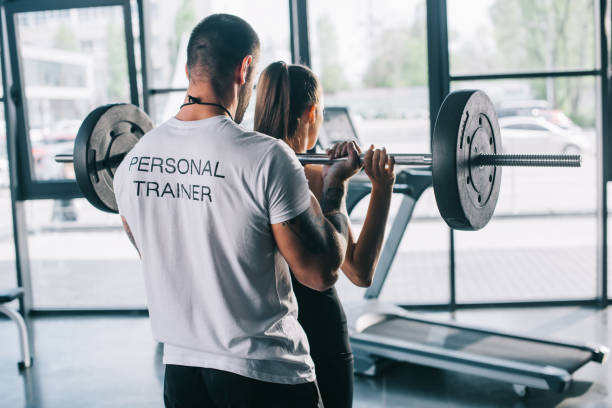The Ultimate Guide to Choosing the Right Personal Trainer for You

When it comes to achieving your fitness goals, one of the best ways to ensure success is to hire a personal trainer. However, choosing the right trainer for your needs can be a daunting task. With so many different trainers, certifications, and approaches to fitness, it can be difficult to know where to start. This guide will walk you through everything you need to know to choose the personal trainer that’s right for you, helping you build a workout routine that’s tailored to your specific goals.
1. Identify Your Fitness Goals
Before you even start searching for a personal trainer, it’s important to know exactly what you want to achieve. Personal trainers specialize in different areas of fitness, so understanding your goals will help you find someone who can best support your needs.
Common fitness goals include:
- Weight Loss: If your goal is to shed pounds, look for a trainer who has experience with fat loss, nutritional guidance, and high-intensity training.
- Strength Training: For building muscle or gaining strength, seek a trainer with a background in weightlifting, resistance training, or bodybuilding.
- Flexibility and Mobility: If improving your flexibility, range of motion, or overall mobility is your goal, consider a trainer who specializes in yoga, Pilates, or corrective exercise.
- Sports Performance: If you want to enhance your athletic performance—whether for running, cycling, or a specific sport—look for a trainer with experience in sports conditioning.
- Injury Recovery and Prevention: If you’re recovering from an injury or want to avoid one, it’s important to find a trainer with a background in injury prevention and rehabilitation exercises.
By understanding your goals ahead of time, you can find a trainer who is well-versed in the area of fitness that will help you succeed.
2. Check for Credentials and Certifications
When selecting a personal trainer, you want to make sure they are qualified to help you meet your fitness goals safely and effectively. Certification is a must, as it indicates that the trainer has received formal education in fitness and exercise science. Some certifications are more reputable than others, so it’s important to know which credentials to look for.
Key certifications to look for:
- Certified Personal Trainer (CPT): This is the most common certification for personal trainers and is offered by organizations like the National Academy of Sports Medicine (NASM), American Council on Exercise (ACE), and the International Sports Sciences Association (ISSA).
- Specialized Certifications: If your goals are more specific, you may want to look for trainers with additional certifications in areas like strength training, nutrition, or injury prevention. Examples include certifications in corrective exercise (CES), sports nutrition, or group fitness.
- CPR and First Aid: A certified personal trainer should also have CPR and first aid training to ensure safety during your workouts. This is particularly important for those with underlying health conditions or a higher risk of injury.
A personal trainer’s credentials give you confidence that they have the knowledge and skills needed to guide you through your fitness journey.
3. Consider Their Experience
While certifications are crucial, real-world experience is just as important when choosing a personal trainer. An experienced trainer will have a better understanding of how to modify exercises based on individual needs, provide the right guidance for progress, and adapt workouts as your body changes.
Questions to ask about experience:
- How long have you been a personal trainer?
- What kinds of clients have you worked with in the past?
- Do you have experience working with people who have similar fitness goals or limitations as mine?
- Have you worked with clients recovering from injuries or with specific health conditions?
A trainer with more experience will have a deeper understanding of various body types, fitness levels, and how to optimize performance for different individuals. Their experience also gives them the ability to assess your fitness level and adjust your workouts accordingly, ensuring that you’re always challenged without risking injury.
4. Evaluate Their Training Style and Personality
A personal trainer isn’t just a coach—they’re your motivator, your accountability partner, and your guide through the fitness journey. It’s important to choose someone whose training style and personality align with your preferences and needs.
Things to consider:
- Motivation Style: Some trainers are energetic and push you to give 110% at all times, while others take a more laid-back and supportive approach. Think about what motivates you most—do you respond to tough love or do you need more encouragement and positive reinforcement?
- Communication: A good trainer should be able to explain exercises clearly and demonstrate them when necessary. They should also be open to feedback and be willing to answer any questions you might have. If they are approachable and communicative, you’ll feel more comfortable asking for help when needed.
- Personality Fit: You’ll be spending a lot of time with your trainer, so it’s important to find someone you click with. During your initial consultation or session, pay attention to how they interact with you. Do they listen to your needs? Do you feel comfortable around them? Are they professional and respectful? Trust and rapport are key to a successful trainer-client relationship.
Choosing a trainer with a personality and style that fits your preferences will make your workouts more enjoyable and sustainable in the long term.
5. Look for Reviews and References
One of the best ways to evaluate a potential trainer is by hearing from their previous or current clients. Reviews, testimonials, and word-of-mouth recommendations can provide insight into the trainer’s effectiveness, communication skills, and overall experience.
Ways to gather feedback:
- Online Reviews: Look for online reviews on websites or fitness apps, or on social media. Feedback from others can give you a sense of how the trainer works with clients and whether they’ve been able to help people achieve their fitness goals.
- Ask for References: A reputable trainer should be willing to provide references or connect you with clients who can share their experience. Don’t hesitate to reach out to those who’ve worked with the trainer to ask about their results and overall satisfaction.
- Client Success Stories: Many trainers showcase before-and-after success stories on their website or social media accounts. These can give you a glimpse of how the trainer helped other clients achieve their fitness goals.
Checking reviews and references helps you feel confident in your choice and gives you a better understanding of how the trainer interacts with their clients.
6. Trial Sessions or Consultation
Before committing to long-term sessions, consider scheduling a trial session or a consultation with a personal trainer. This will give you the chance to experience their training style firsthand, ask questions, and determine if you’re comfortable working with them.
What to expect during a trial session or consultation:
- Fitness Assessment: A good trainer will perform an initial fitness assessment, which may include evaluating your current fitness level, discussing your goals, and identifying any injuries or limitations. This is an important step to ensure that the trainer creates a program that’s safe and effective for you.
- Training Approach: Pay attention to how the trainer designs your session. Are they clear in their instructions? Are they paying attention to your form? Do they offer modifications for exercises? This will give you a better sense of their expertise and how they handle different fitness levels.
- Feel It Out: Lastly, trust your gut. Do you feel motivated and comfortable during the trial session? Is the trainer professional and respectful of your goals and preferences? If something doesn’t feel right, it may be a sign to keep searching for a better fit.
A trial session allows you to assess the trainer’s suitability before committing to a full fitness plan.
7. Price and Availability
Personal trainers come in a wide range of prices depending on their experience, location, and specialization. Before committing, make sure you understand the cost and what’s included in the package.
Things to consider:
- Pricing: Make sure the trainer’s pricing fits within your budget. Keep in mind that rates can vary based on experience, location, and the length of sessions. Some trainers also offer group training sessions, which may be more affordable.
- Session Availability: Confirm that the trainer’s schedule aligns with yours. You want someone who is available at times that work for you and who is consistent in showing up for scheduled sessions.
- Package Deals: Many trainers offer discounts for bulk session packages. It’s worth inquiring about packages that may help you save money in the long term.
Understanding the financial commitment and ensuring the trainer’s schedule fits yours is essential for maintaining consistency and long-term progress.
Conclusion: Finding the Right Personal Trainer
Choosing the right personal trainer can feel like a big decision, but it’s an investment in your health and well-being. By identifying your fitness goals, checking credentials, evaluating their experience, and considering your personal preferences, you can find a trainer who will help you achieve your goals. The right trainer will not only guide you through workouts but will also provide the support, motivation, and expertise needed to ensure your success.
If you take the time to find the perfect fit, a personal trainer can help you unlock your potential, make progress faster, and build sustainable habits that will last a lifetime. Start your journey today by finding a trainer who understands your needs, motivates you to push harder, and helps you achieve results you never thought possible.




